Abstract
The article reports the effects of several socioeconomic and environmental indicators on the nutritional status (stunting, underweight, and wasting) of a sample of 802 children aged 12-35.9 months in urban and rural areas of southern Brazil. Of the social variables studied, family income and father's education level were the two risk factors that showed the strongest associations with nutritional status. The mother's education level, employment status of the head of the family, number of siblings, and family's ethnic background also showed some degree of association, but these were less significant when family income was included in the analysis. Environmental variables, particularly the type of housing, degree of crowding, and type of sewage disposal, were also strongly associated with malnutrition. The effects of having access to piped or treated water were only apparent on stunting and wasting.
Full text
PDF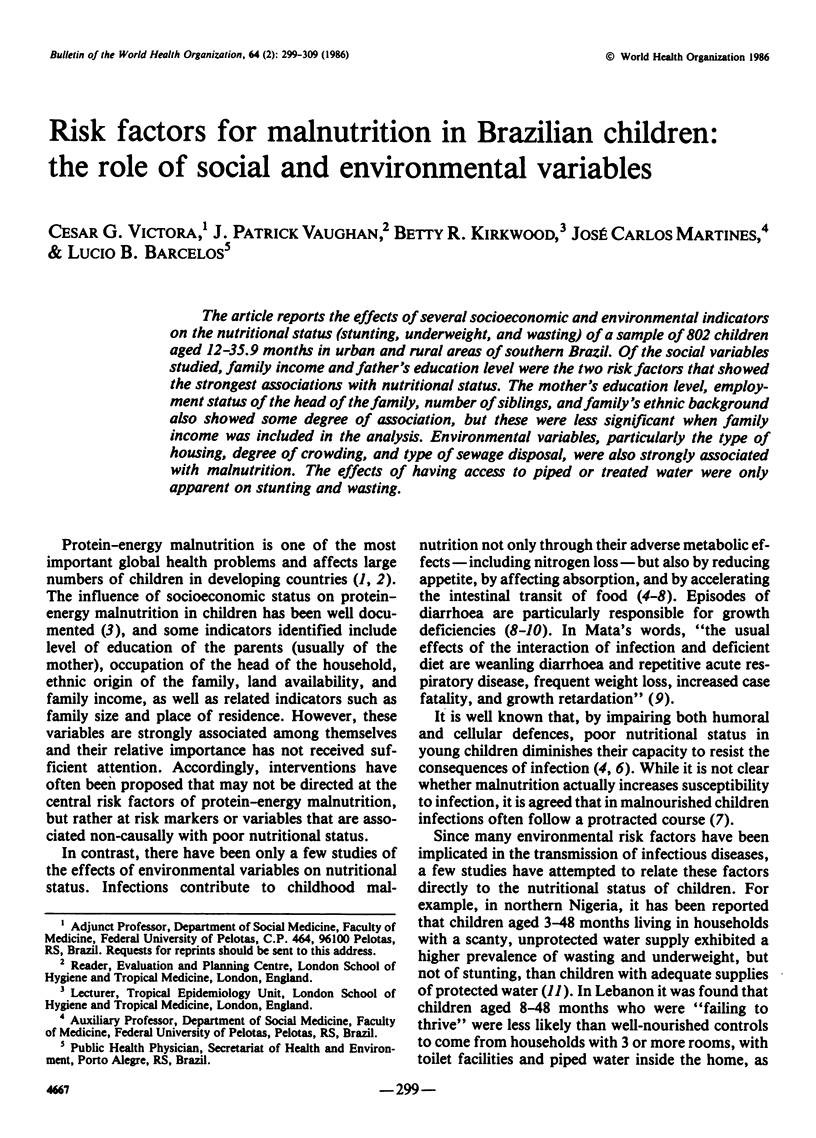
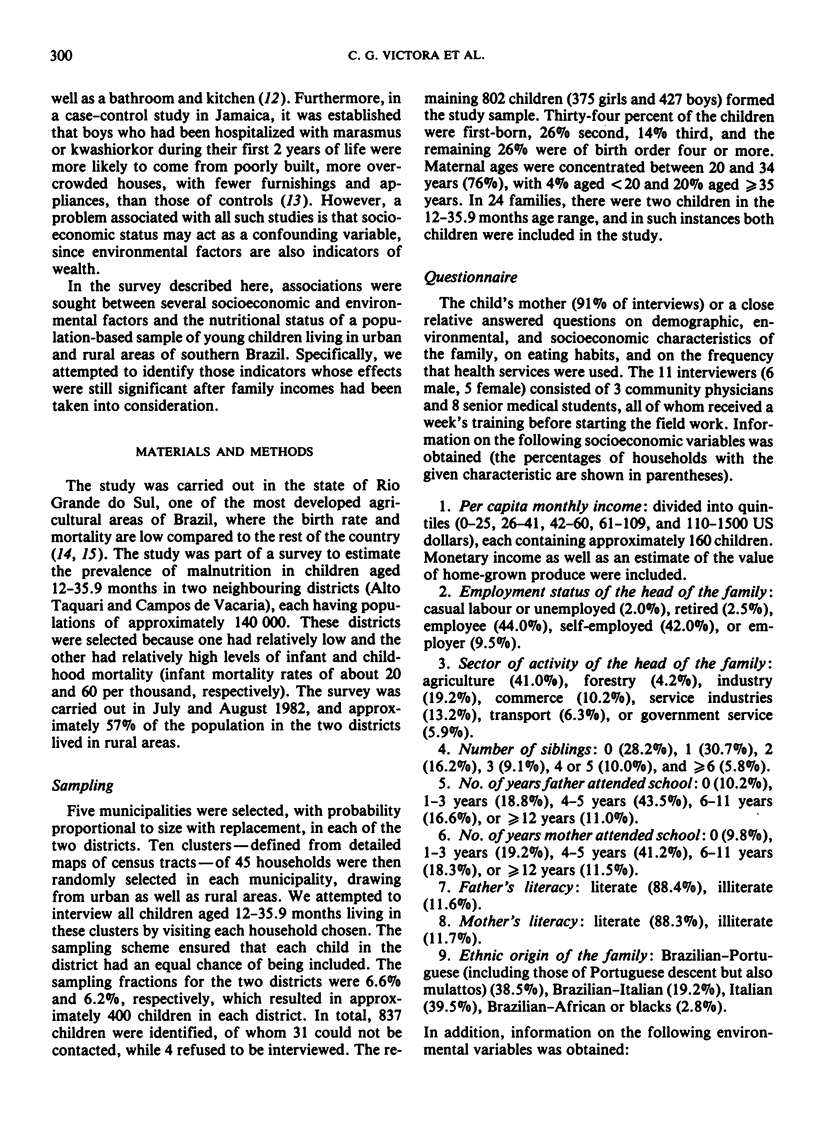
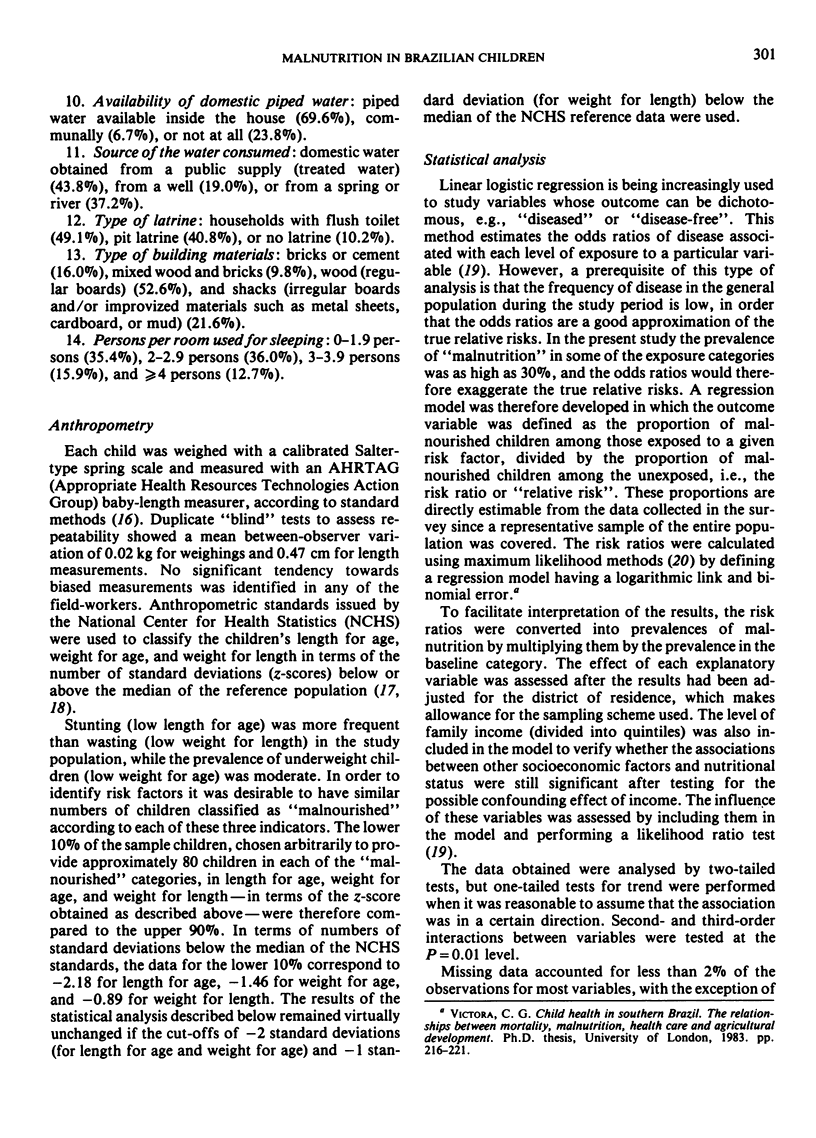
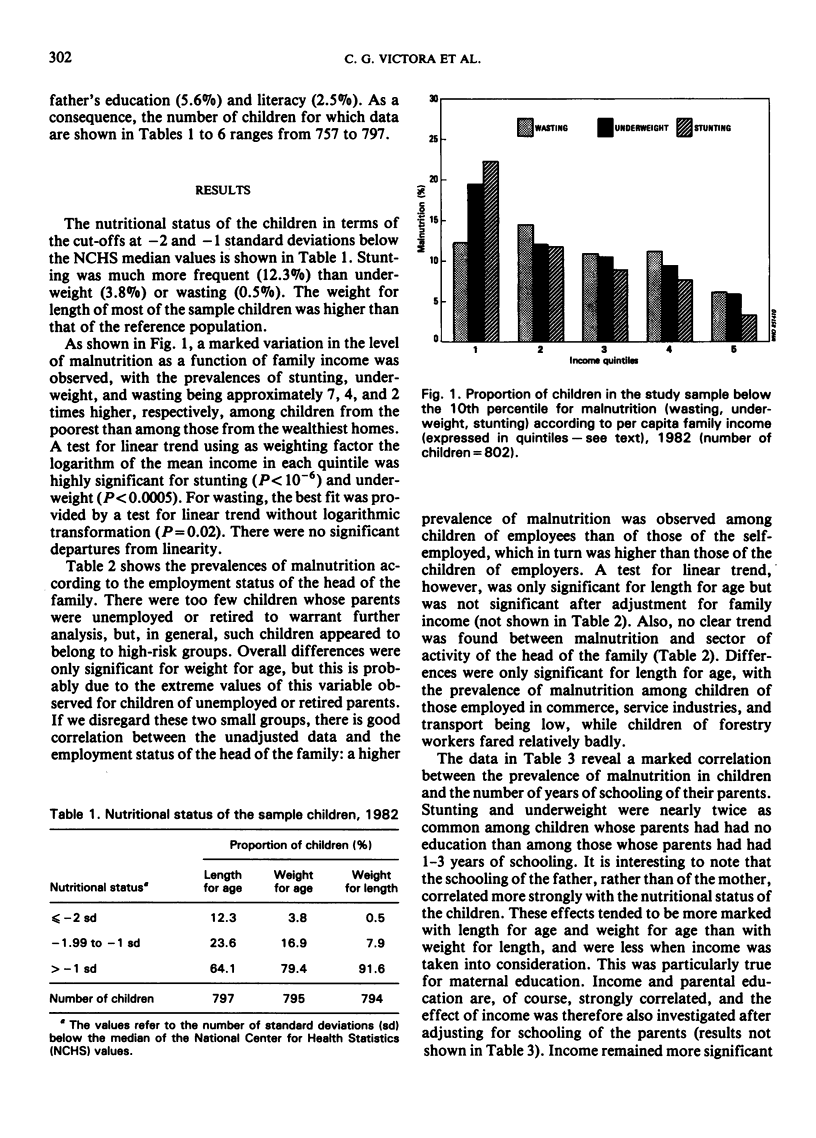
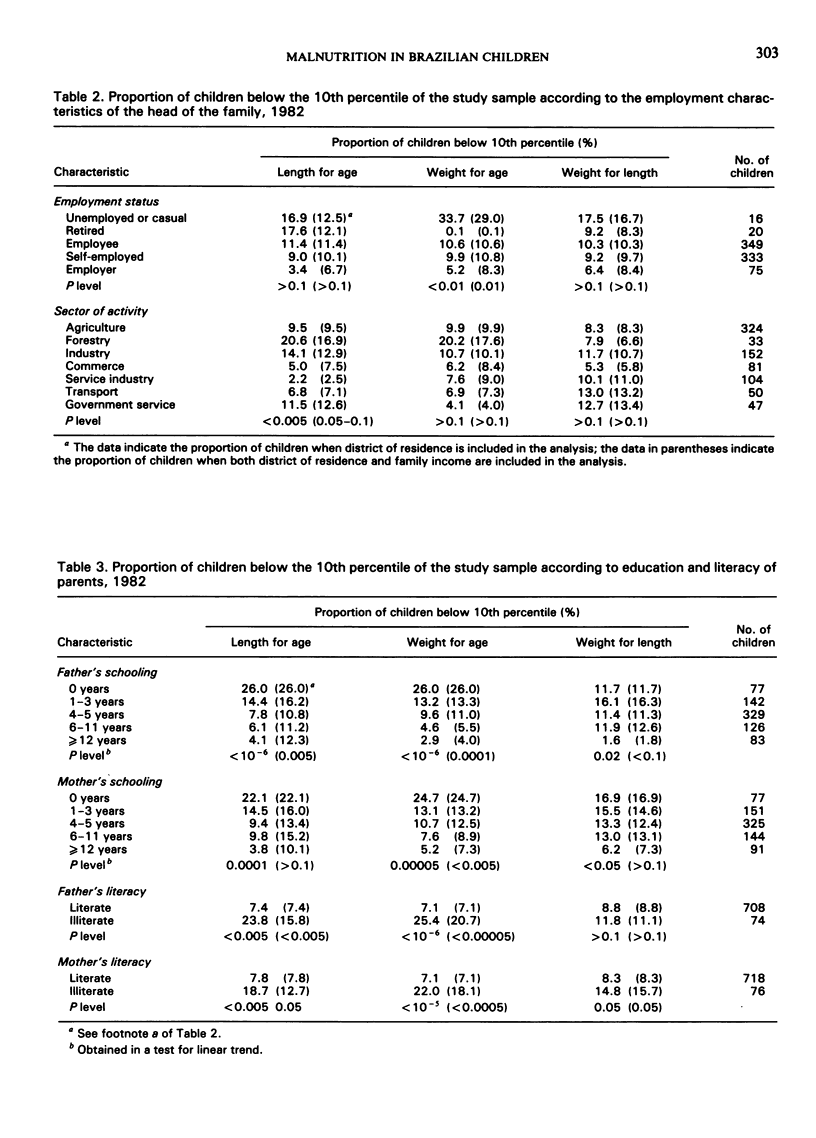

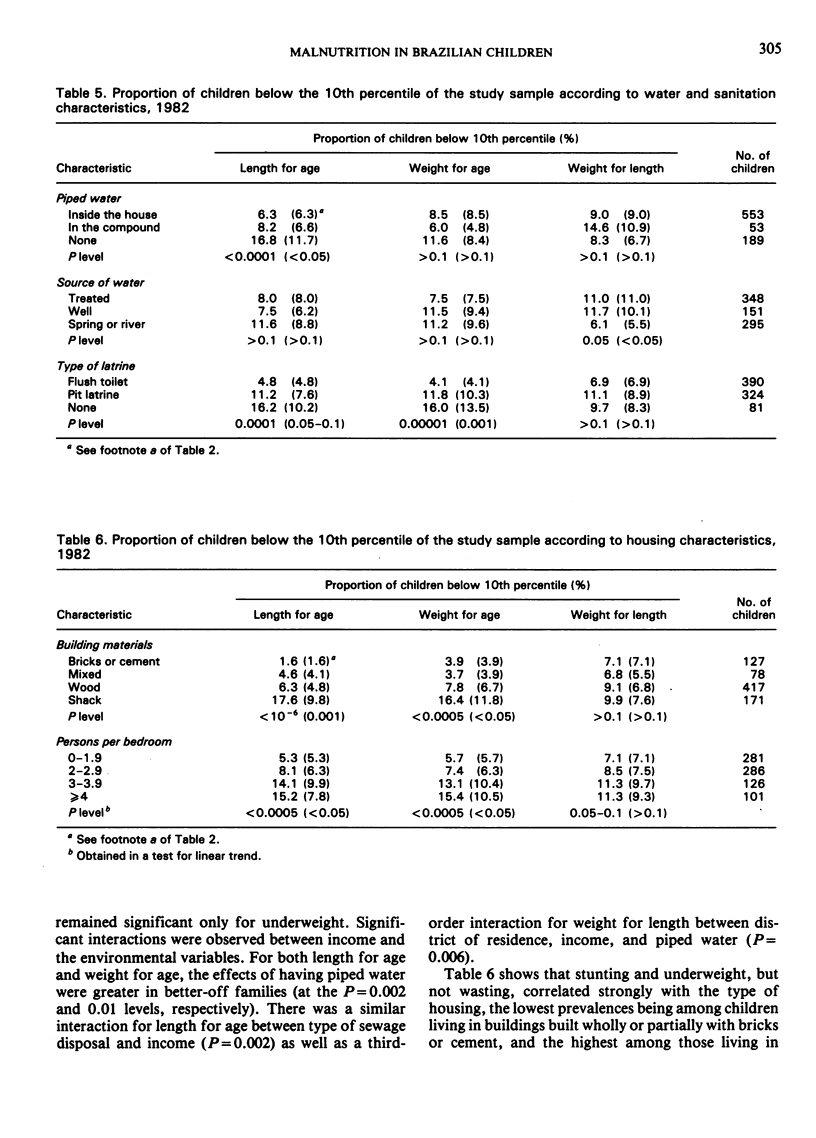
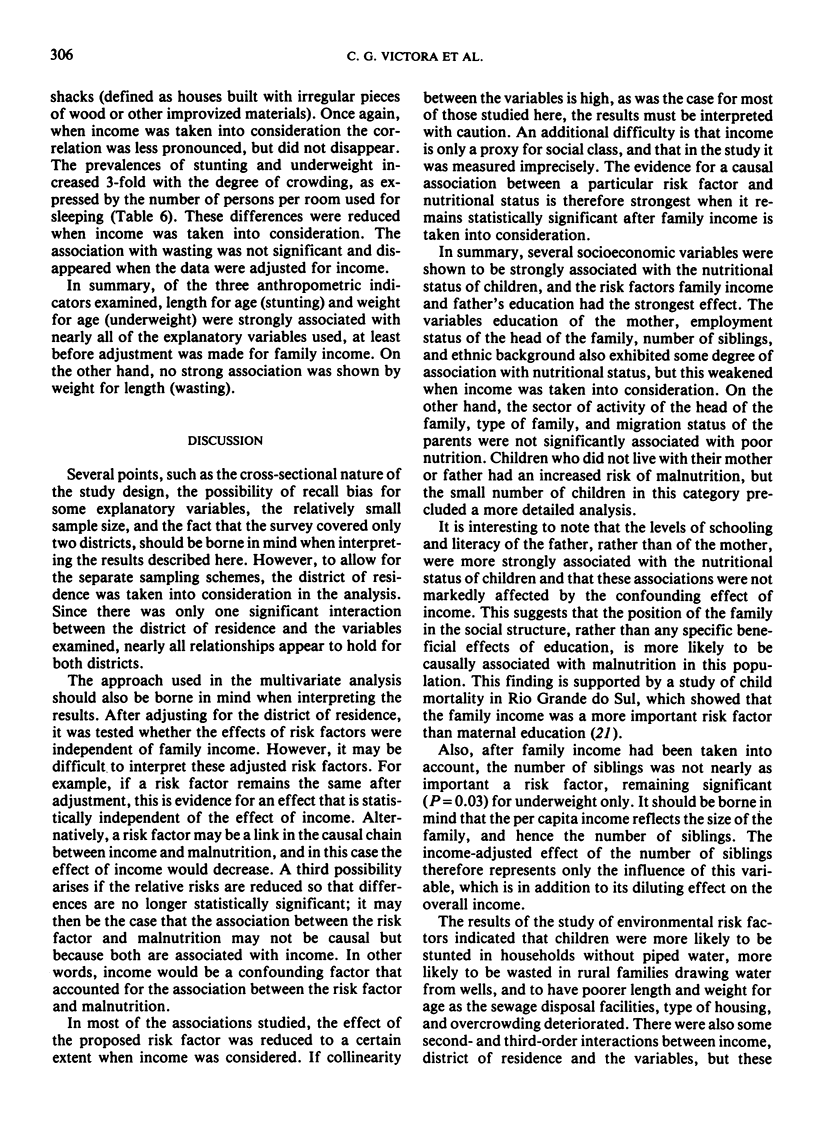
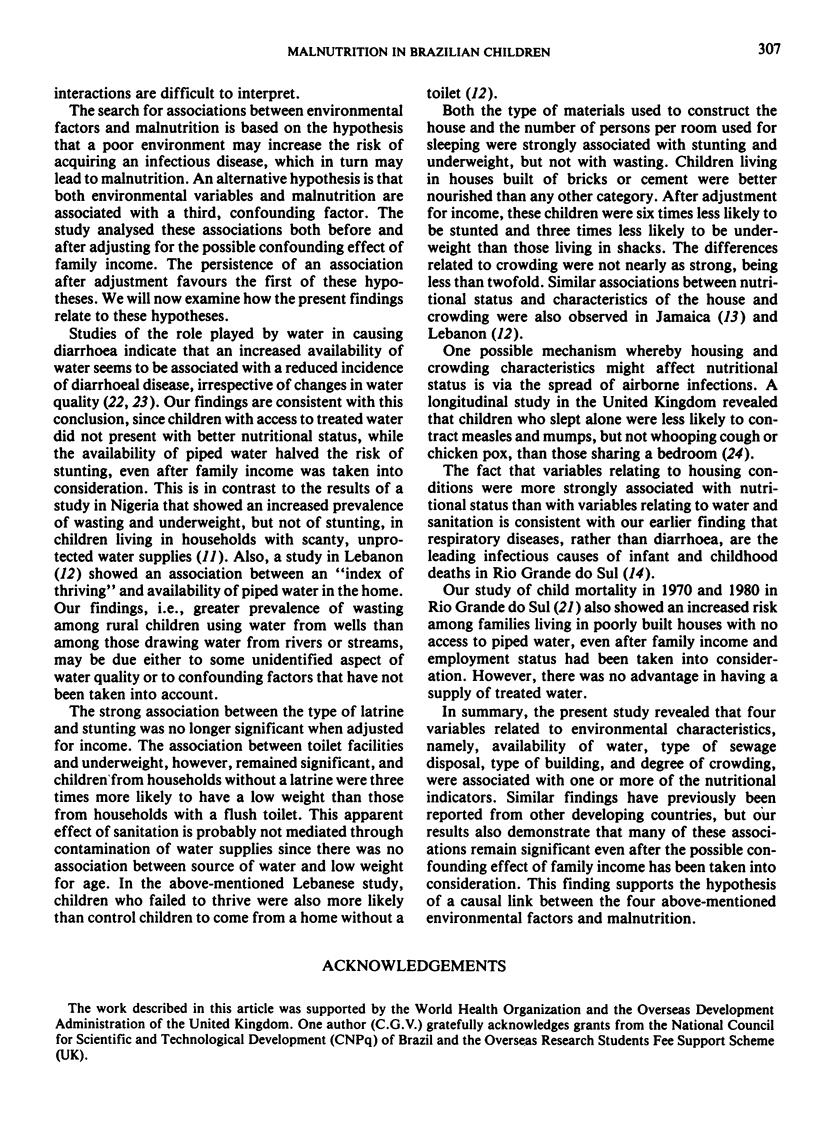
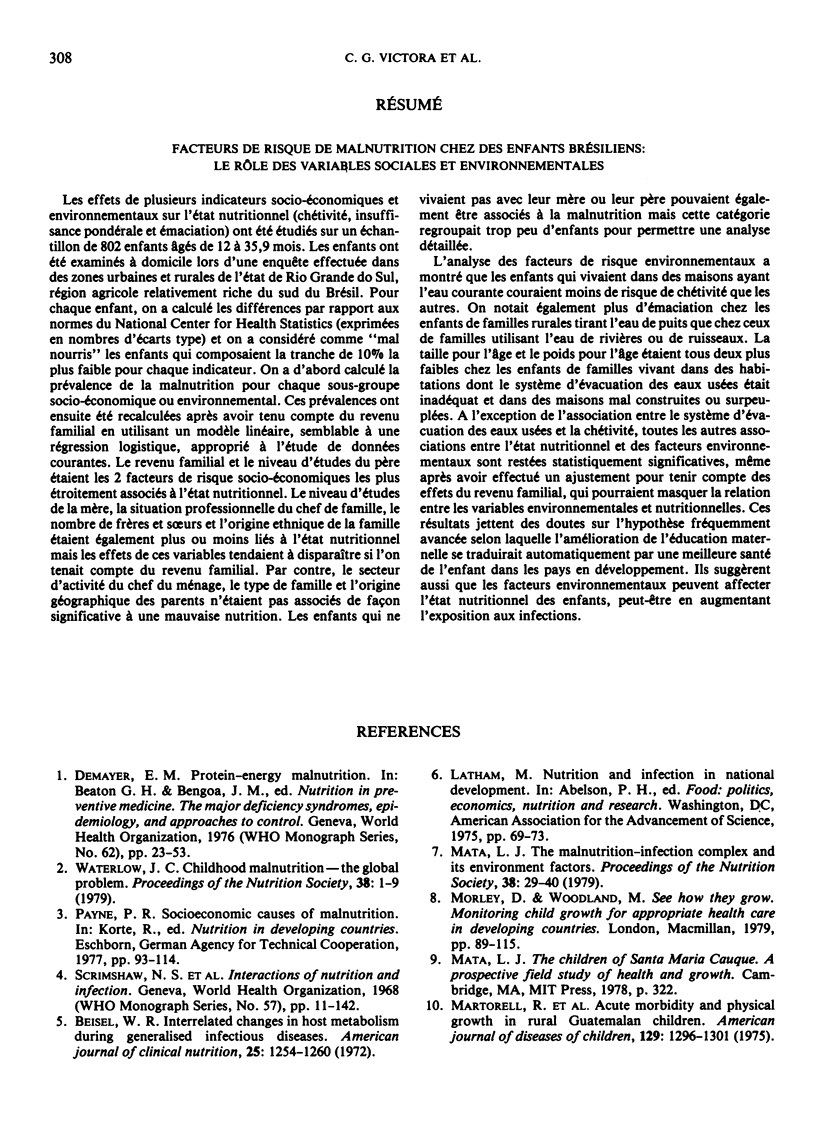
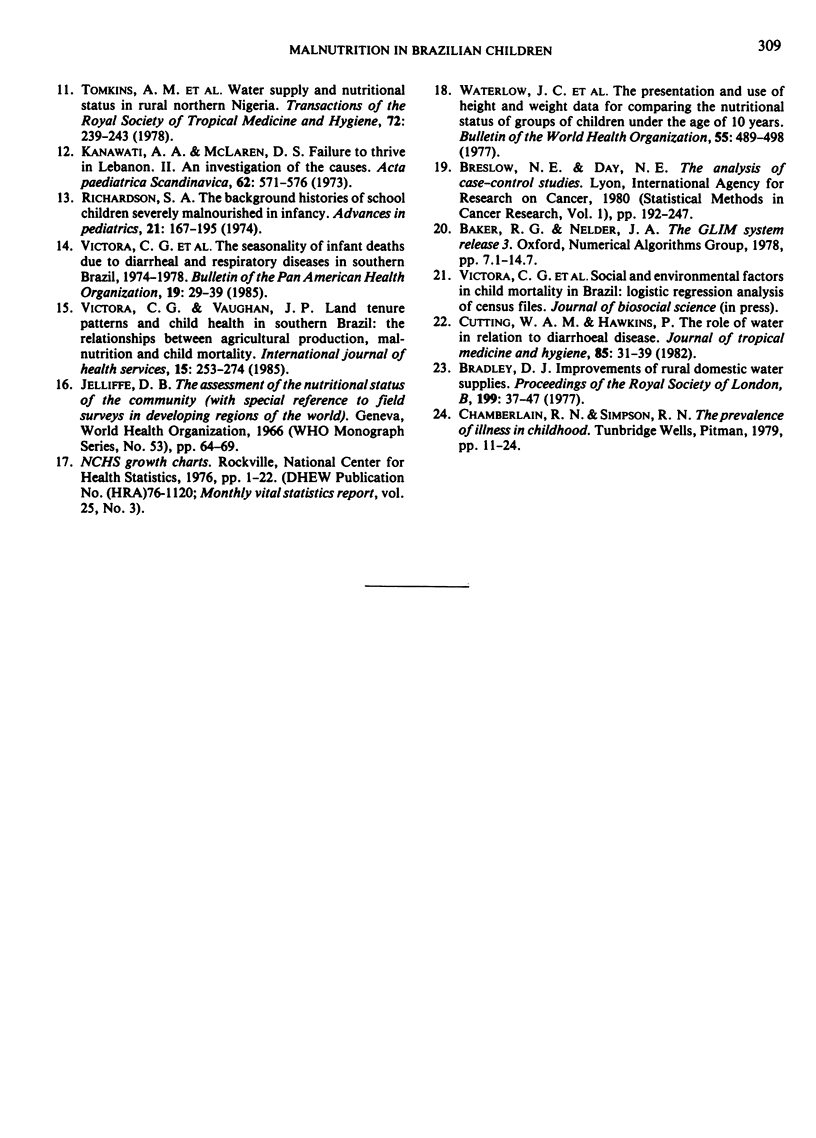
Selected References
These references are in PubMed. This may not be the complete list of references from this article.
- Cutting W. A., Hawkins P. The role of water in relation to diarrhoeal disease. J Trop Med Hyg. 1982 Feb;85(1):31–39. [PubMed] [Google Scholar]
- Kanawati A. A., McLaren D. S. Failure to thrive, in Lebanon. II. An investigation of the causes. Acta Paediatr Scand. 1973 Nov;62(6):571–576. doi: 10.1111/j.1651-2227.1973.tb17067.x. [DOI] [PubMed] [Google Scholar]
- Martorell R., Habicht J. P., Yarbrough C., Lechtig A., Klein R. E., Western K. A. Acute morbidity and physical growth in rural Guatemalan children. Am J Dis Child. 1975 Nov;129(11):1296–1301. doi: 10.1001/archpedi.1975.02120480022007. [DOI] [PubMed] [Google Scholar]
- Mata L. The malnutrition-infection complex and its environment factors. Proc Nutr Soc. 1979 May 1;38(1):29–40. doi: 10.1079/pns19790006. [DOI] [PubMed] [Google Scholar]
- Richardson S. A. The background histories of schoolchildren severely malnourished in infancy. Adv Pediatr. 1974;21:167–195. [PubMed] [Google Scholar]
- Tomkins A. M., Drasar B. S., Bradley A. K., Williamson W. A. Water supply and nutritional status in rural northern Nigeria. Trans R Soc Trop Med Hyg. 1978;72(3):239–243. doi: 10.1016/0035-9203(78)90201-8. [DOI] [PubMed] [Google Scholar]
- Victora C. G., Vaughan J. P. Land tenure patterns and child health in southern Brazil: the relationship between agricultural production, malnutrition and child mortality. Int J Health Serv. 1985;15(2):253–274. doi: 10.2190/6NDY-9YC1-WQ1X-EDE3. [DOI] [PubMed] [Google Scholar]
- Waterlow J. C., Buzina R., Keller W., Lane J. M., Nichaman M. Z., Tanner J. M. The presentation and use of height and weight data for comparing the nutritional status of groups of children under the age of 10 years. Bull World Health Organ. 1977;55(4):489–498. [PMC free article] [PubMed] [Google Scholar]


